Optoelectronic Devices and Integration(OEDI)
DATE: 7/6/2019
Topical meeting 02
Optoelectronic Devices and Integration
(OEDI)
Chair
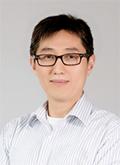 |
| Po Dong Nokia Bell Labs, USA |
Co-chairs
 |
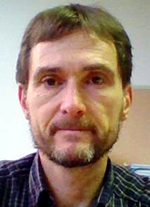 |
 |
| Yikai Su Shanghai Jiao Tong University, China |
Eric Cassan Paris-Sud University, France |
Yu Yu Wuhan National Laboratory for Optoelectronics, Huazhong University of Science and Technology, China |
Program Committee Members
Giampiero Contestabile, Scuola Superiore Sant'Anna, Italy
Daoxin Dai, Zhejiang University, China
Yunhong Ding, Technical University of Denmark, Denmark
Odile Liboiron-Ladouceur, McGill University, Canada
Liu Liu, South China Normal University, China
Periklis Petropoulos, University of Southampton, UK
Christophe Peucheret, University of Rennes, France
Jochen Schröder, Chalmers University of Technology, Sweden
Pingheng Tan, Institute of Semiconductors, CAS, China
Xi Xiao, Wuhan Research Institute of Posts & Telecommunications, China
Ke Xu, Harbin Institute of Technology (Shenzhen), China
Invited Speakers
 |
Dayan Ban, University of Waterloo, Canada Title: Probing the inner workings of quantum photonic devices Abstract: Scanning probe microscopy, including scanning spreading resistance microscopy, scanning capacitance microscopy and scanning voltage microscopy (SVM), is a novel and enabling tool to quantitatively probe internal dopant profile, voltage distribution and carrier distribution at nanometer scales. Scanning probe microscopy has been applied to a few representative photonic devices – buried heterostructure (BH) lasers, ridge waveguide lasers, terahertz (THz) quantum cascade lasers (QCL) and interband cascade lasers (ICL). The experimental results demonstrate that the unique SPM technique can reveal the inner workings, thus connect internal mechanism with external measures. The demonstration of resolving dynamic charge carrier density distribution and electric potential profile in an operating optoelectronic laser device is unprecedented and could open the door to many future applications in probing the underlying mechanisms for many puzzling issues such as sub-par performance and degradation in nanoelectronic devices, quantum devices and optoelectronic devices. |
 |
Xinlun Cai, Sun Yat-sen Univerisity Title: High-performance hybrid silicon and lithium niobate optical modulators Abstract: Optical modulators are at the heart of optical communication links. Ideally, they should feature low loss, low drive voltage, large bandwidth, high linearity, compact footprint and low manufacturing cost. Unfortunately, these criteria have been achieved only on separate occasions. Based on a silicon and lithium niobate hybrid integration platform, we demonstrate Mach–Zehnder modulators that simultaneously fulfil these criteria. The high-performance modulator is realized by seamless integration of a high-contrast waveguide based on lithium niobate—a popular modulator material—with compact, low-loss silicon circuitry. The hybrid platform demonstrated here allows for the combination of ‘best-in-breed’ active and passive components, opening up new avenues for future high-speed, energy-efficient and cost-effective optical communication networks. |
 |
Eric Cassan, Paris-Sud University, France Title: Tunable optoelectronic oscillator based on silicon micro-ring resonator Abstract: A new silicon optoelectronic oscillator (OEO) system is proposed and experimentally demonstrated. The proposed OEO, generates the microwave signal by beating the un-modulated and amplitude-modulated versions of the same laser source. The drop port of a silicon micro-resonator is used to select one of the side band lobes generated by the amplitude modulation, thus serving as frequency selective element in the OEO. In this scheme, the microwave frequency generated is determined by the wavelength separation between the laser and the ring resonance. Thus, seamless microwave frequency tuning can be achieved just by sweeping the wavelength of the laser source. A proof-of-concept demonstration is implemented, experimentally showing microwave frequency generation in the range from 5.9 GHz to 18.2 GHz. |
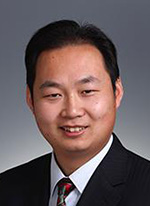 |
Feng Chen, Shandong University, China Title: Waveguide lasers based on low-dimensional materials as saturable absorbers Abstract: Low dimensional materials are excellent saturable absorbers for pulsed laser generation. We summarize the recent progress on solid-state Q-switched or mode-locked waveguide lasers based on low dimensional materials, including 2D materials, nanotubes, and nanoparticles. |
 |
Yuntian Chen, Huazhong University of Science and Technology, China Title: Non-abelian gauge field optics and spin-photonics Abstract: Here we present a theoretical construction of SU(2) non-Abelian gauge fields acting on two-dimensional optical waves in anisotropic materials that can be a useful to study the various phenomena in spin photonics. |
 |
Zhenzhou Cheng, Tianjin University, China Title: Mid-infrared germanium photonics Abstract: In this talk, I review our research progress in the mid-infrared germanium photonics, including a suspended membrane waveguide, focusing subwavelength grating coupler, suspended membrane microring resonator, and photonic crystal cavities. |
 |
Yunhong Ding, Technical University of Denmark, Denmark Title: Silicon photonics for quantum information technologies Abstract: We present our recent work on silicon photonics for quantum information technologies, including quantum key distribution, on-chip generation and manipulation of high-dimensional quantum entanglement, and sampling of quantum states of light in a silicon chip. |
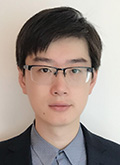 |
Xin Gai, City University of Hong Kong, China Title: On-chip chalcogenide photonic devices for infrared applications Abstract: This work reports a series of chalcogenide nanophotonic devices including ultrahigh nonlinearity nanowire, fully embedded high-Q photonic crystal nanocavity, triple-layer waveguide and their applications in near- & mid-infrared wavelengths. |
 |
Michael Galili, Technical University of Denmark, Denmark Title: Processing of optical data signals using integrated devices Abstract: We will discuss the need for novel technologies to continuously improve the energy consumption of IT and communication infrastructure. We will present recent work on linear and non-linear optical signal processing using compact integrated devices. |
 |
Xuetao Gan, Northwestern Polytechnical University, China Title: Realizing Lorentzian, Fano and EIT resonance lineshapes in a microring resonator Abstract: Microring resonators, as a fundamental building block of photonic integrated circuits, have been well developed into numerous functional devices, whose performances are strongly determined by microring's resonance lineshapes. In this talk, we propose two compact structures to reliably realize Lorentzian, Fano, and electromagnetically induced transparency (EIT) resonance lineshapes in a microring resonator. In the first structure, by simply inserting two air-holes in the side-coupled waveguide of a microring, a Fabry-Perot (FP) resonance is involved to couple with microring's resonant modes, showing Lorentzian, Fano, and EIT lineshapes over one free spectral range of the FP resonance. The quality factors, extinction ratios, and slope rates in different lineshapes are discussed. At microring's specific resonant wavelength, the lineshape could be tuned among these three types by controlling the FP cavity's length. Experiment results verify the theoretical analysis well and represent Fano lineshapes with extinction ratios of about 20 dB and slope rates over 280 dB/nm. In the second structure, a single air-hole is inserted into the bus-waveguide coupled with a microring, which functions as a phase shifter. Fano resonance lineshapes are obtained at each resonant wavelengths. The obtained slope rate and extinction ratio of the Fano resonant lineshapes are 22.2 dB and 557.33 dB/nm, respectively. The reliably and flexibly tunable lineshapes in the compact structure have potentials to improve microring-based devices and expand their application scopes. |
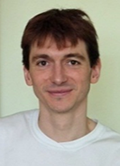 |
Boris Gralak, Aix Marseille University, France Title: Design of optical metasurfaces for innovative display devices Abstract: We report the modeling, the design and the fabrication of transparent and flat optical surfaces which may find applications such as innovative display devices and head-up-display systems in the transport industry. |
 |
Changjian Ke, Huazhong University of Science and Technology, China Title: Brillouin gain spectrum (BGS) tailoring for high resolution optical spectrum measurement Abstract: We manipulate optical and acoustic modes related to the stimulated Brillouin scattering (SBS) process in optical fibers. Thus a narrow bandpass optical filter with high rejection can be achieved by BGS tailoring. |
 |
Sylvain Lecler, University of Strasbourg, France Title: Photonic jet submicron laser processing for optoelectronic prototyping Abstract: Photonic jet allows light to be focused beyond the diffraction limite using dieletrc microspheres or optical fiber shaped tips. We demonstrate the possibility to perform sub-micrometer laser etching on semiconductor with this technique. |
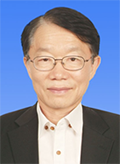 |
Changhee Lee, Korea Advanced Institute of Science and Technology, Korea Title: Mutual interferences in LiDARs for autonomous vehicles and their mitigation methods Abstract: Performance of a LiDAR depends strongly on interferences by signals from other LiDARs. Various kind of interferences and their impacts on performances of autonomous vehicles are reviewed. Mitigation methods of the interferences are addressed. |
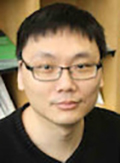 |
Peining Li, CIC nanoGUNE, Spain Title: Infrared hyperbolic metasurface based on nanostructured van der Waals materials Abstract: Hyperbolic metasurfaces with strongly anisotropic optical properties supports deep subwavelength-scale confined surface polaritons, which present a hyperbolic dispersion. They could extremely enhance light-matter interaction at mid-infrared and terahertz frequencies (corresponding to energies of molecular vibrations, and thermal emission and absorption) for photonic and thermal applications, such as heat management, chemical sensing and deep subwavelength imaging. However, hyperbolic metasurfaces working at these frequencies have not been developed yet due to the required challenging fabrication. In this work, we realize the first mid-infrared hyperbolic metasurface by nanostructuring a thin layer of hexagonal boron nitride —a prototypical van der Waals (vdW) polar material, which supports mid-infrared phonon polaritons with strong electromagnetic field confinement, ultraslow group velocities and long lifetimes. We used scattering-type scanning near-field optical microscopy to directly observe phonon polaritons emerging from the hot spot at the extremity of an infrared antenna and propagating through the metasurface with in-plane hyperbolic dispersion, which assembles the concave (anomalous) wavefronts of a diverging polariton beam. These results show that near-field microscopy can be applied to reveal the exotic wavefronts of polaritons in anisotropic materials, and demonstrate that nanostructured vdW materials can form a highly variable and compact platform for hyperbolic infrared metasurface devices and circuits. |
 |
Hongtao Lin, Zhejiang University, China Title: Chalcogenide mid-infrared Nanophotonics Abstract: Chalcogenide glass have emerged as a promising material candidate for mid-infrared (MIR) integrated photonics. Here we summarize our works on MIR chalcogenide glass resonators, photodetectors, modulators and the demonstration of cavity enhanced MIR chemical sensing. |
 |
Anjin Liu, Institute of Semiconductors, CAS, China Title: Design and fabrication of lateral metastructures for VCSELs Abstract: Vertical-cavity surface-emitting lasers (VCSELs) have wide applications in data communication, sensing, and consumer electronics, because they have many advantages, such as circular beam, low power consumption, high modulation speed, low cost, high reliability, and 2D array configuration. In this talk, we will present two types of subwavelength gratings with a broadband high reflectivity for VCSELs. These subwavelength gratings are fabricated on GaAs/Ga0.51In0.49P layers with selective etching process and GaAs/Al0.9Ga0.1As layers with wet oxidation process. The measured reflectivity spectra are consistent well with the calculated result. These subwavelength gratings can serve as reflectors for VCSELs and tunable VCSELs. |
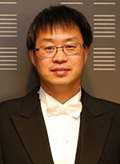 |
Huiyun Liu, University College London, UK Title: Roadmap of 1300-nm InAs/GaAs quantum dot laser grown on silicon for silicon photonics Abstract: Quantum dot (QD) lasers monolithically grown on silicon substrates has been considered as a promising approach for on-chip light source in Si photonics. In this paper, the recent progress in Si-based InAs/GaAs QD lasers at 1300nm wavelength is demonstrated. |
 |
Huihui Lu, Jinan University, China Title: Micro and nanostructured lithium niobate and its multi-dimensionally tunable phtotonic devices Abstract: We report the micro and nanostructured lithium niobate (LN) as a versatile platform for realizing the enhanced electro-optic effect and tunable photonic devices. The idea is to combine the high electro-optic coefficient (or nonlinear property) of LN and its sub-wavelength structures to boost and enhance the light-mater interaction, this progresses the low-voltage driven, versatile, miniaturized photonic devices for multi-dimensional modulation and sensing. |
 |
Cunzheng Ning, Arizona State University, USA & Tsinghua University, China Title: Light Emission Devices based on 2D Layered Materials Integrated on Silicon Abstract: Van der Waals layered materials offer interesting aspects for Silicon based light emission applications. This talk will discuss our recent efforts in demonstrating LED and lasing using 2D materials integrated with Silicon photonic crystal cavities. |
 |
Minhao Pu, Technical University of Denmark, Denmark Title: Broadband optical signal processing in nonlinear AlGaAs-on-insulator platform Abstract: Combining the ultra-high material Kerr nonlinearity and the ultra-strong nonlinear enhancement, AlGaAs-on-insulator waveguides enable various nonlinear applications. High-order phase matching dispersion engineering leads to ultra-broadband four-wave mixing. Recent demonstrations of optical signal processing are reviewed. |
 |
Yaocheng Shi, Zhejiang University, China Title: Subwavelength-Grating metamaterial structures for silicon photonic devices Abstract: The sub-wavelength grating (SWG), which is a one-dimensional array of deeply sub-wavelength nano-strips, can provide precise control over modal confinement, effective index, dispersion and birefringence, showing great potentials in high-performance nano-photonic devices. The SWG based on silicon waveguides thereby opening up new approaches to manipulate the optical responses and control the flow of light. In this talk, we will introduce some of our recent work on the silicon metamaterial based silicon integrated devices, including the bent multi-mode waveguides, multi-mode crossings, and also the polarization handling devices. |
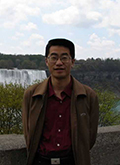 |
Changzheng Sun, Tsinghua University, China Title: Nonlinear optics in AlN-based microring resonators Abstract: AlN-on-sapphire is an attractive platform for integrated nonlinear optics, which boasts both intrinsic second- and third-order nonlinearities. Broadband Kerr comb generation as well as Raman lasing in high-Q AlN microring resonators will be demonstrated. |
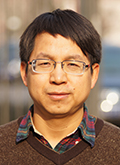 |
Pingheng Tan, Institute of Semiconductors, CAS, China Title: Interficial coupling and electron-phonon coupling in van der Waals heterostructures Abstract: The strong cross-dimensional coupling between the layer-breathing phonons well extended over tens to hundreds of layer thick WS2/hBN heterostructures and the electrons localized within its few-layer WS2 constituent is observed, which can be well understood by the interlayer bond polarizability model in van der Waals heterostructures. |
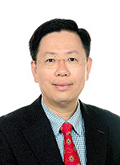 |
Din Ping Tsai, The Hong Kong Polytechnic University, China Title: Meta-optics: meta-lens for imaging and sensing Abstract: We capture multidimensional optical information including image and depth with a dielectric achromatic metalens array. The full scene can be reconstructed from the rendered full-color images. |
 |
Laurent Vivien, Paris-Sud University, France Title: Nonlinear third order silicon photonics enabled by dispersion and subwavelength engineering Abstract: We will present two aspects of our works on the realization of supercontinuum sources based on silicon-rich waveguides and on the hybrid integration of As2S3 chalcogenide in silicon slot waveguides for nonlinear silicon photonics. |
 |
Jianlu Wang, Shanghai Institute of Technical Physics, CAS, China Title: Multi-mechanism synergistic photodetectors based on low-dimensional materials Abstract: Broadening the spectral range of photodetectors is an essential topic in photonics. Traditional photodetectors have been widely used, however, the realization of ultrabroad spectrum photodetectors remains a challenge. Here, a photodetector constructed by a hybrid quasi-freestanding structure of ferroelectrics with low-dimensional (LD) semiconductors is presented. The LD materials with ultra thin structure brings a great benefit of heat dissipation for the thermal infrared detector. By coupling the mechanisms of pyroelectrics, photoconductor and phototransistor effect, an ultrabroad spectrum response ranging from ultraviolet to long-wavelength infrared is achieved. This approach constitutes a reliable route towards realizing high-performance photodetectors with a remarkable ultrabroad spectrum response, high responsivity, low power consumption, and room-temperature operation. |
 |
Kenneth Wong, The University of Hong Kong, China Title: Dual-comb imaging by electro-optic modulators Abstract: We present some recent advances in electro-optic (EO) based dual-comb imaging, particularly in the forms of energy-efficient spectrally encoded confocal microscopy (DC-SECM) and video-rate centimeter-range optical coherence tomography (DC-OCT) at a relaxed detection bandwidth requirement. |
 |
Jianbin Xu, The Chinese University of Hong Kong, China Title: Progress in optoelectronic devices based on graphene-like layered materials Abstract: In this report, we will provide a comprehensive introduction to the investigations on the combination of elemental junction and planar heterostructure in TMDCs in terms of preparation and characterization mechanisms. |
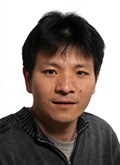 |
Xiulai Xu,Institute of Physics, CAS, China Title: Cavity quantum electrodynamics with single quantum dots and photonic crystal cavities Abstract: We report strong coupling for cavity QED between different excitonic states in a single quantum dot and a cavity including two-photon Rabi splitting, and the interaction enhancement between cavities and p-shell excitons will be discussed. |
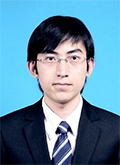 |
Xiaoxiao Xue, Tsinghua University, China Title: Coupled Cavity Solitons with High Conversion Efficiency Abstract: Cavity solitons can enable broadband mode-locked microcombs, but usually have very poor energy conversion efficiency. Here we introduce a novel scheme to generate high-efficiency solitons with mutually coupled cavities. |
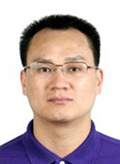 |
Lin Yang, Institute of Semiconductors, CAS & University of Chinese Academy of Sciences, Beijing, China Title: Silicon optical modulators for data centers and optical fiber communications Abstract: We present three types of silicon PAM-4 optical modulators, one of which has the modulation rate of 120 Gb/s. We present two types of silicon 16-QAM optical modulator, one of which has the modulation rate of 200 Gb/s. |
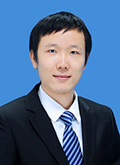 |
Baicheng Yao, University of Electronic Science and Technology of China, China Title: Facing to Internet of Things: graphene on-fiber and on-chip photonic information sources Abstract: Photonic information sources are key devices in optical network, the signal sources provide frequency-time standard for communication, while sensing sources offering information conversion. To improve performance of advanced photonic information sources especially the optoelectronic controllability, multi-functionalization and response sensitivity, we combine graphene material and waveguide platform, enabling new mechanism, diverse structures and high-performance devices. Here I report our researches about graphene based frequency combs, lasers and biochemical sensors, which have seen widely potential in communication and precision diagnosis. |
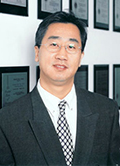 |
Xiaotian Yao, He Bei University,China Title: Novel fiber optic sensing schemes based on polarization analysis Abstract: We present our recent research activities and results at Hebei University on using polarization analysis to realize novel fiber optic sensing schemes, including polarimetry fiber optic gyroscopes (P-FOG) for rotation sensing, polarization analyzing OFDR (PA-OFDR) for distributed transversal stress sensing, and distributed polarization crosstalk analysis (DPXA) for distributed temperature and transversal stress sensing. |
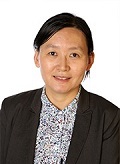 |
Xiaoke Yi, The University of Sydney, Australia Title: Integrated microwave photonics for sensing and signal processing Abstract: Advances in integrated microwave photonics for sensing and signal processing are presented. These include an integrated microwave photonic phase shifter, photonic-assisted scanning receivers, and a high-sensitivity and high-resolution silicon photonic sensor. |
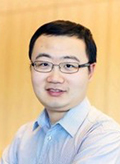 |
Cheng Zhang, University of Maryland, USA Title: Spatiotemporal manipulation of optical fields with metasurfaces Abstract: In this talk, I will explain how optical metasurfaces, planar arrays of subwavelength electromagnetic structures that collectively mimic the functionality of much thicker conventional optical elements, can be employed for shaping light in both spatial and temporal domains. I will first show that by patterning loss-less dielectric materials through a high-aspect-ratio nano-patterning Damascene process, high-performance transmission-type metasurfaces can be realized at visible and ultraviolet (UV) frequencies, which include TiO2-based devices operating in the visible and performing spin-controlled Airy beam generation, and HfO2-based devices operating at UV frequencies, including within the deep-UV range, and performing representative wavefront shaping functions such as lensing, beam bending, and hologram projection. Then, I will show that metasurfaces can be also leveraged to modulate the temporal profile of a near-infrared femtosecond pulse and achieve finely tailored pulse shaping operations such as splitting, compression, chirping, and higher-order distortion. |
 |
Shangjian Zhang, University of Electronic Science and Technology of China, China Title: High-resolution and self-calibration microwave characterization of high-speed optoelectronic devices Abstract: High-spectral-efficiency optical communication systems and hyper-fine microwave photonic systems require to manipulate optical signals with high precision and multiple dimensions (amplitude and/or phase). The frequency response characterization with high-resolution, multi-parameter and high-accuracy is very critical to supporting the innovation and breakthrough in the key devices and related fields. In this talk, we will present heterodyne spectrum mapping for self-calibrated frequency response measurements of high-speed semiconductor laser diodes, Mach-Zehnder modulators, phase modulators and photodetectors with a shared self-heterodyne interferometer. We will also address the self-referenced extraction of microwave characteristic parameters of optoelectronic devices including modulators and photodiodes with self-reference and on-chip capability. |
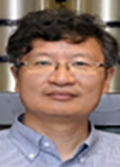 |
Xiaoping Zheng, Tsinghua University, China Title: PADC and PDAC and their application in wideband imaging radars Abstract: PDAC/PADC for signals with wide bandwidth have been researched in Tsinghua University for more than 10 years. This talk will introduce PDAC with up to 10GHz analog signal bandwidth and PADC with up to 4GHz signal bandwidth, and their application in microwave photonics-based radars. |
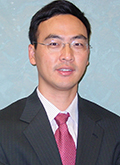 |
Weidong Zhou, University of Texas at Arlington, USA Title: Scaling of photonic crystal lasers for energy efficient integrated photonics on silicon Abstract: I will report recent progresses related to hybrid integrated photonic crystal surface-emitting membrane lasers on silicon substrate, based on QW gain material and transition metal dichalcogenide monolayers. Issues to be discussed related to thermal performance, charge injection, and scaling towards energy efficient optical interconnects. |
 |
Xihua Zou, Southwest Jiaotong University, China Title: Photonic integrated circuit for diverse communication and detection applications Abstract: By using photonic integrated circuits, approaches and systems for broadband wireless communications and diverse microwave measurement functionalities are implemented, including radio-over-fiber system for high-mobility scenarios, microwave frequency measurement, and electromagnetic interference detection along high-speed railways. |























